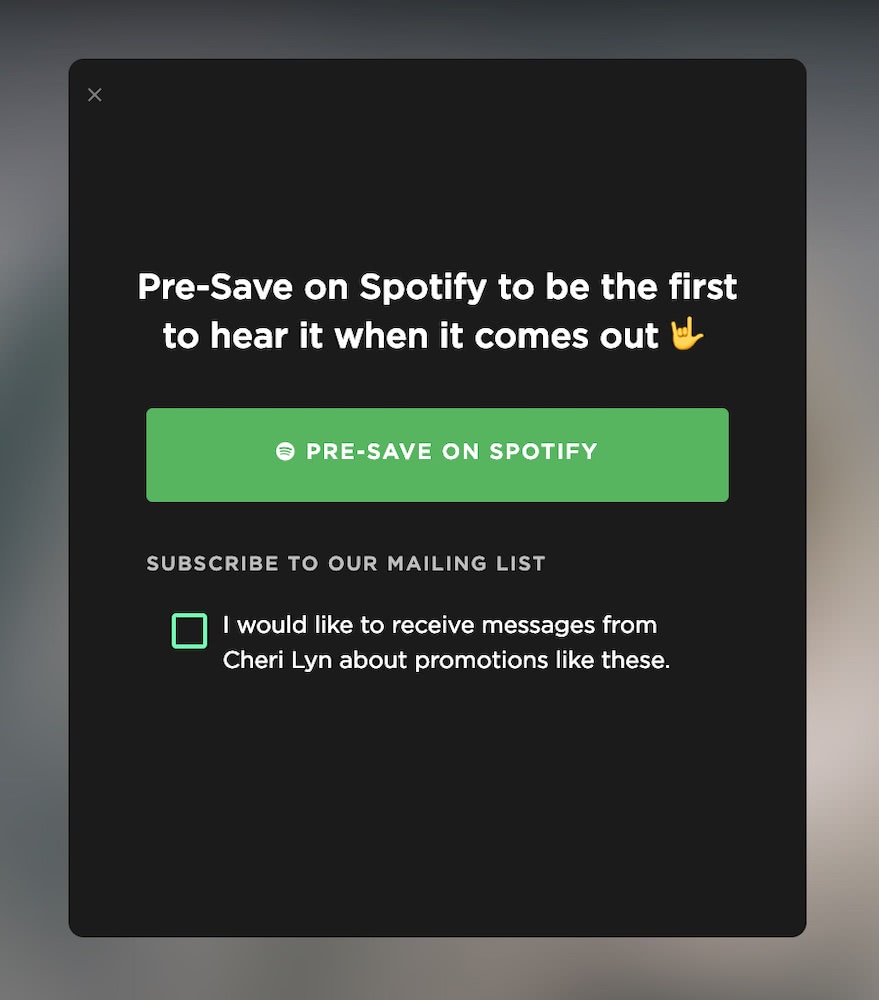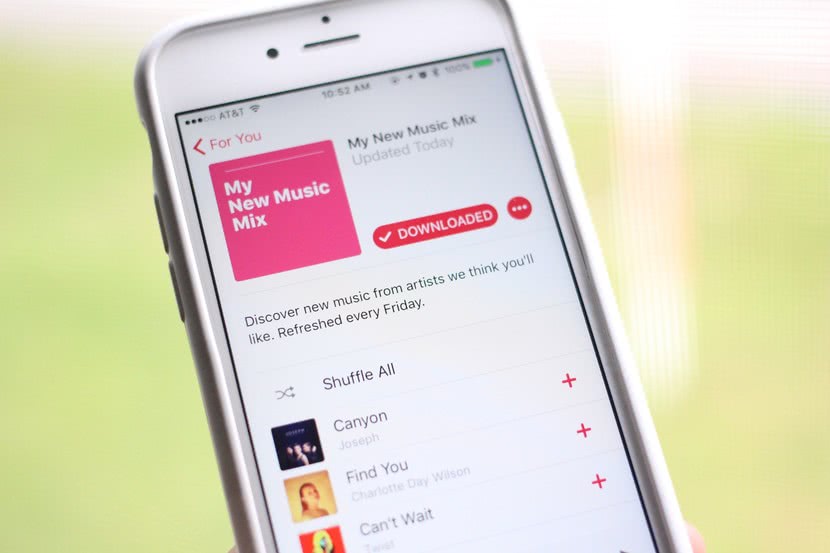Terry McBride’s (Nettwerk) Bigsound Keynote was so forward-thinking, it will bug you

Managing the careers of artist like Avril Lavigne and Coldplay, Network’s Terry McBride is a wealth of knowledge which delegates attending Bigsound 2019 were able to tap into and absorb – and boy was there a lot to absorb.
A visionary and an innovator, McBride theorised concepts and strategies that are out of the box, and frankly, question whether the box even exists.
Basing his artists’ strategies on the concept that the monetisation of people’s emotional response is the value inside the music business, not ownership of the creative works for the consumer and using data to support these seemingly wild theories, McBride launched into an hour of power with revelations.
Backing these concepts with sets of data, facts and figures that had even the most seasoned artist managers and industry heavy weights shaking in their boots, McBride got stuck into the position we are currently in within the industry, and where it’s all headed if the data is anything to go by.
Without further ado, here are the key takeaways from McBride’s BIGSOUND Keynote that may or may not annoy the crap out of you.
Algorithmic streams are the only streams and data that you can affect through marketing
People may try to tell you streams aren’t sustainable. However unlike the iTunes model where there’s a sharp rise in downloads and then a decline until they flat line, streams will never flat line.
They may slow, but they’ll never drop to nothing, as long as your fans have saved your music to their playlists (organic streams). Streaming has a lot more value than what people give it credit for.
Streams that are driven by algorithm are the only ones that you can actually affect with marketing and strategy. Therefore algorithms are important because they are a reflection of fan listening behaviour, habits and trends.
So, how do the algorithms work? Well, according to McBride, they aren’t nearly the dark art they are made out to be.
If we use Spotify as an example, they’re affected by three different things:
- Sonic Qualities: If you or your artist makes a sonic departure from their prior releases, the algorithms will stop that song from being serviced to any of the artists followers or the followers of the genre they’re dabbling in. So if your artist is going to do a 180 degree turn sonically and become something else, you’re starting from zero.
- Social profiles: Who is blogging about the artist, Who are they being compared to? What playlists are they being added to?
- Community: Who are the recommended/related artists for your artist? Do they match what your artist is doing sonically? Who are the artists in your genre that are connecting multiple music listening communities together and are you being recommended to their fan bases?
Key take away: If you can’t work out what community your artist is/ should be part of, there’s a data base in the backend of your Spotify for Artists account called Every Noise At Once. This will help you to narrow down which of the 180,000 communities your artist’s fans are indicating they belong to.
Search your artist name and it will pop up with anywhere from 100 to 1000 artists in the same community as yours. Click on the ones that have the bigger circles because those are the biggest markets and the ones you want to get cosy with.
It is becoming more and more challenging to affect editorial
Terry McBride warned a relationship with a curator or music editor will bypass this. They’re not going to put it on their playlist if they and their followers don’t like the music.
However, if they do and then the data shows that it shouldn’t be on that playlist, they will take it off sometimes 24 hours later and that’s not where you want to be.
Organic streams are the ones that earn the most income
That is your only long-term value in the streaming context that will keep generating residual income. If you’re not encouraging your fans to follow you on your streaming platforms, your editorial streams will only last for the first six to eight weeks that they’re included in all those tastemaker and platform curated playlists.
You can use the buzz around the release cycle of other artists to drive your streams
How? Nettwerk signee Harrison Storm is an Australian artist who arguably 99% of the Aussie market don’t know about. He currently clocks over 50 million streams a year.
This spike wasn’t directly affected or caused by anything Harrison’s team did. Through analysing Harrison’s Spotify data, Nettwerk were able to figure out why, and it was due to Ziggy Alberts releasing music and Harrison was one of the artists recommended to Ziggy’s fans by Spotify.
Why? Because Harrison sat in the same community as those artists and Spotify recognises this, so the actions of those artists affected Harrison streams. This all translated to millions of streams that wouldn’t have happened without this other artists’ community.

Harrison Storm
Every time another artist in your community releases music, it will drive your own artist’s streams. An artists’ community is vital to shaping their streaming trajectory. Artists like Ziggy Alberts in Harrison’s genre are “connectors” and bring up other artists in the scene because they are connected to so many communities that they link them together.
Key Take Away: Ultimately, you want to grow your artist into being a connector. These artists’ are so valuable in helping smaller artists to establish themselves in their community and grow them in multiple marketplaces.
Not all streams are created equal
Every stream is not equal. And it’s very important to understand this.
Say your artist has amassed 10 million streams, but all those 10 million streams come from India. The income yielded will only just buy you a latte.
Conversely, those 10 million streams coming from Sweden will give you a down deposit on a house. Why? Because 60% of the Nordic countries’ streaming population are consuming the content via paid subscription. The same cannot be said of paid subscription rates in India.
The data presented by McBride highlights that three years ago the streaming rates worldwide were going down because the consumption rate was growing faster than what the subscription rates were. This was due to consumers adopting “kid in a candy store” consumption habits when given unlimited access.
Now, the subscription rates are growing faster than the consumption rates, so the streaming rates are starting to go back up again.
McBride noted that people in the industry tend to get lost in the negativity versus seeing the opportunities in streaming, focusing on the data that is going down rather than the data that is going up.
Downloads are down, physical sales are down. It’s neighbouring rights that are up and streaming that has gone nuclear.
Key take away: You and your artists need to embrace this new business model that is based around access not ownership. Paid subscriber rates from all streaming services worldwide are expected to double due to innovations in technology such as AI voice activation.
While Nettwerk’s AI based streams accounted for 10% of their total streams this time last year, they now account 19% of their roster’s streaming revenue.
The introduction of streaming into the marketplace might feel like it isn’t placing value on the creation of the works, the amount the artist is getting per stream is going up and will continue to rise as subscription rates continue to out-perform consumption rates.
You live and die by your follower count on your streaming platforms
The most important metric when you’re looking at an artist’s analytics is not their monthly listeners. It’s not even number of streams. It’s their followers.
This is what McBride referred to as the “opportunity index”. Every time your artist releases new music, it will be automatically serviced to your artist’s followers.
Of that, 30% might actually listen to it. Some of them may listen to it multiple times, and put it in their own playlists and save it to their libraries and this is vital to gaining organic streams (the ones you need for career longevity).
This activity all happens on a Friday. If by Monday, the data is looking good, Spotify will feed those songs to your artists’ community through their “discover” and “daily mix” playlists.
Spotify and other services make recommendations based on what their listeners like and save and will push new music that sonically aligns with what’s gaining traction on the platform.
Key take away: Make sure you’re driving traffic through your artist’s socials to the “pre-save” and “follow” functions on your artist’s streaming platforms.

Spotify’s pre-save option
If you get heavy triple j rotation too early in an artists’ career, your streaming data will Geo-Lock you
Why? because we are in the digital age. Music communities used to be driven by geographical locations/cities i.e. the Grunge scene that came out of Seattle. In today’s global world which relies so heavily on technology, especially when it comes to the discovery of new music, that no longer happens.
It’s not driven by cities, or even countries, it’s driven by a flat world as your streams will come from all the corners of it.
This is where Australia has problems, and McBride isn’t exactly sure how to solve them. However, he does recommend exporting the artist as quickly as possible to overseas markets.
Mallrat, one of Nettwerk’s artists and well-known Australian act has had this exact issue. McBride and his team had to work really hard to push her into other markets because of what the intense triple j hype did to her streaming data.
This is where McBride had to get smart and create a global community around Mallrat using other “connecting artist’s”. He even went as far as signing other acts who were in that “outlier” who didn’t have clear connecting artist’s to ride the coat-tails of.
McBride says that signing communities as opposed to individual acts was a key strategy for Nettwerk because if they build a community and sign acts that can benefit from that pre-existing community that they’ve already worked so hard to create; both the artist and the label can add value to what each other is doing.

Mallrat
We have completely unknown Australian bands like Harrison Storm and Hollow Coves amassing 50-60 million streams a year, touring internationally and being more successful than bands in the Top 10 of the hottest 100.
Key take away: If you want a multi-continent career, don’t wait a year or two before thinking about playing in overseas markets, launch your artist simultaneously in multiple markets. If you don’t, you’ll Geo-Lock your artist to their home country/region, almost cementing from the outset that they won’t have an international career.
In a flat world model, this ultimate fascination of being played on triple j will kill your career internationally. Why? Because Australian music (as long as it’s not on heavy triple j rotation) is more popular internationally.
However, if you Geo-Lock your artist and your streams aren’t growing evenly between your artist’s Australian/overseas markets, you will only ever be able to reach a maximum of 25 million people and you’ll live and die in Australia.
Landing ‘New Music Friday’ is the worst thing that can happen to a new artist
Why? It’ll completely screw your data that you’ve been building on all of your artists’ streaming platforms. It will strip your community that you’ve curated and built. It’s not where you want to be.
According to McBride, “It’s a one-week jolt and then you’re crashing and feel like shit.”
Playlists like New Music Friday skew your community, so you do not want to be on a playlist of that scale until you’re of a certain size that the bump in streams you’ll receive won’t affect the overall story your data is building.
Key take away: Do not try and get on a ‘New Music Friday’ playlist or its equivalent if you don’t already have an engaged following, it will also Geo-Lock your artist.

Apple Music’s New Music Friday Mix
Don’t get lost in the data, make strategic decisions based on intuition and follow the music
Use the data but don’t follow it. Theorise and create a strategic plan that keeps it in mind but McBride suggests using it more as proof of concept.
Focus on where your intuition takes you and use a finite amount of data to measure how your artist is doing, but focus more importantly on your artists community.
As McBride so brilliantly pointed out, “music is the monetisation of emotions, and that’s what you’ve got to base all your artist’s strategy on, at least till AI figures out that emotive concept.”
McBride’s final parting words gave the whole room full of Australian artist managers, labels, publicists, journalists and artists pause:
“It’s not as hard as you think get out of the box (triple j/Geo-Locking), because you’re not in it. It’s like that scene in the Matrix, you’re in The Matrix, but it doesn’t exist, and you need just to think differently.
“I told you what I was going to say might not make sense. But in your subconscious now, my plan is that I leave you with something that’s going to bug the hell out of you until you figure out what it means to you. And you work out how to use what I’ve given you in your own way”.
This article originally appeared on The Industry Observer, which is now part of The Music Network.






























